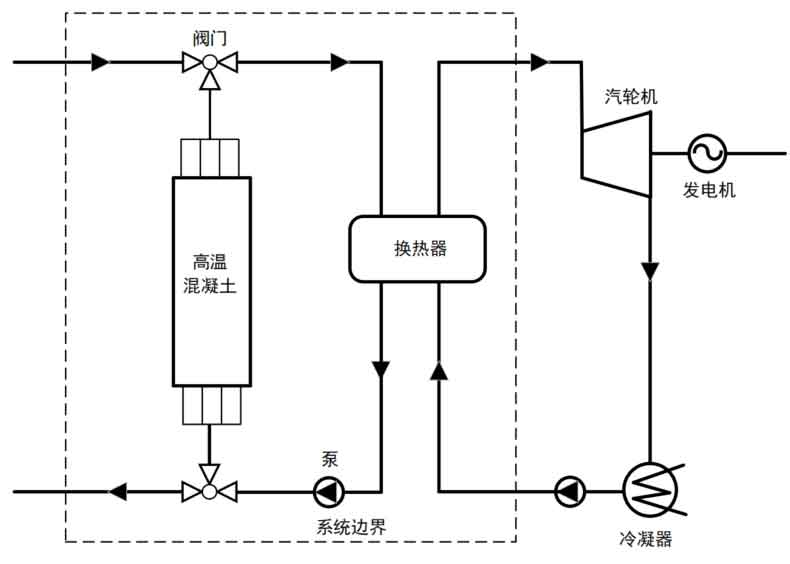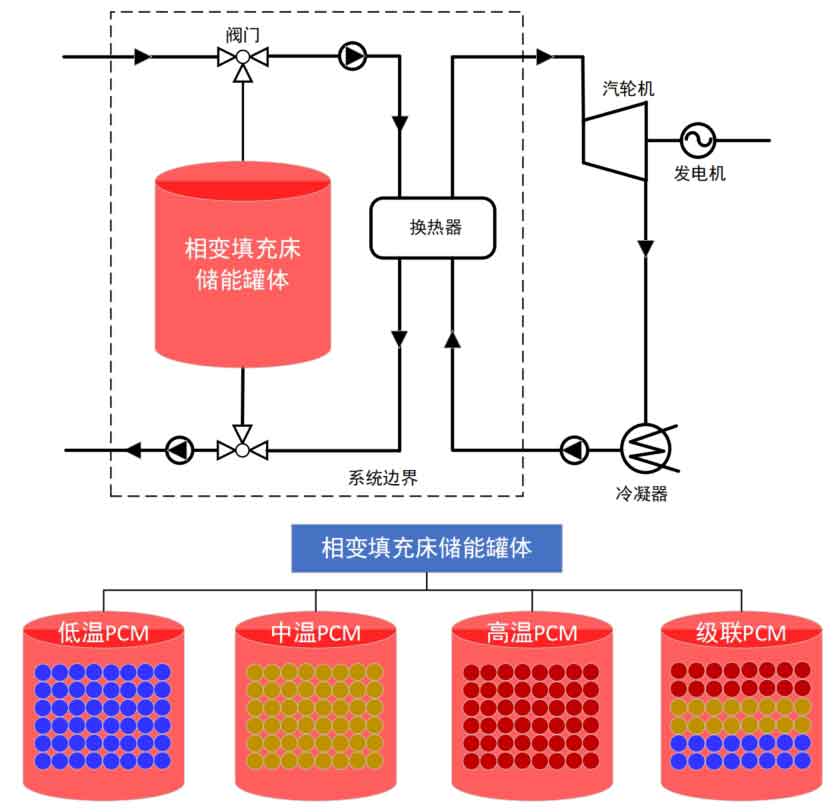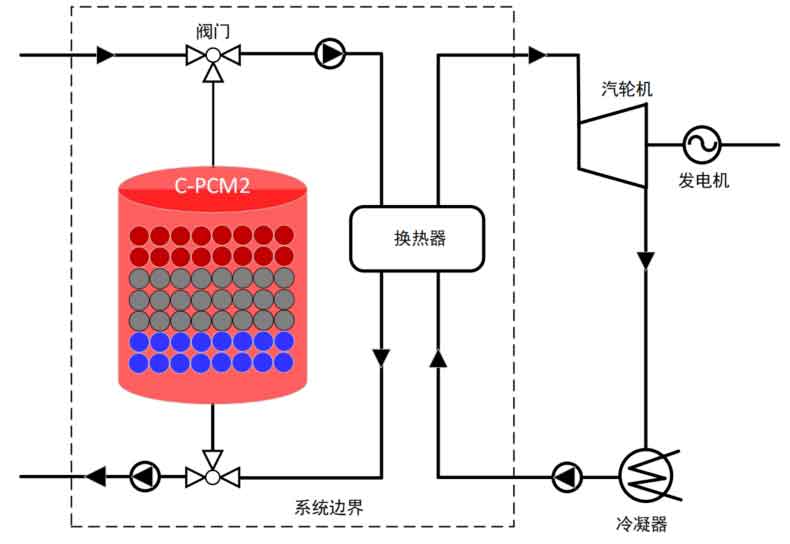The study analyzed the cost composition and unit energy storage cost of different energy storage systems, but the specific costs of these energy storage schemes cannot fully reflect their technical and economic potential, as the generation costs of different energy storage systems over their lifespan have not been calculated. Therefore, it is necessary to adopt a more comprehensive technical and economic model for evaluation based on the investment costs and performance of different energy storage systems. The Levelized Cost of Electricity (LCOE) model is often used to evaluate power generation costs and is a reliable technical and economic evaluation method.
Usually, the economic analysis of most energy storage systems mainly focuses on inputting deterministic parameter values for indicator calculation. However, this method does not consider the uncertainty of the main variables that affect the economic indicator results, and cannot provide the possibility of calculation results in different scenarios, which has certain limitations. Based on the above issues, considering the uncertainty of variables, by defining the probability density function of the main variables and using Monte Carlo simulation methods, the probability distribution of power generation costs for different energy storage systems can be obtained, thereby obtaining more practical results. Quantitatively evaluate the uncertainty of different energy storage systems to provide a basis for selecting the optimal solution. In addition, this chapter further considers the environmental and social benefits of carbon reduction in the system, providing decision-makers with more comprehensive information in determining the economic feasibility of energy storage systems.
Solar thermal power plants with energy storage systems generally include three parts: solar field, energy storage module, and power generation module. The solar field mainly includes reflector fields, parabolic troughs (trough type) or absorption towers (tower type), pipelines, and pumps. The energy storage module mainly includes molten salt pumps, pipelines, valves, heat exchange devices, and energy storage tanks. The power generation module mainly includes turbine generators, condensing devices, pump bodies, pipelines, and valves. In order to accurately evaluate the technical and economic situation of different energy storage systems and make them comparable, it is necessary to define the computational boundaries of the systems.
(1) Dual tank molten salt energy storage system
In a two tank molten salt energy storage system, when the sunlight is abundant during the day, the low-temperature molten salt is heated by the solar collector and stored as high-temperature molten salt in the tank. When there is no sunlight at night, the heat extracted from the high-temperature molten salt is converted into water vapor for power generation, and the low-temperature molten salt after heat exchange is stored in the low-temperature tank.

The dashed line in Figure 1 represents the boundary range of the dual tank molten salt energy storage system. Based on the cost calculation of the dual tank molten salt energy storage system and the proportion of other costs within the system boundary, the investment cost of the dual tank molten salt system is 12206197.56 US dollars, and the energy storage capacity of the system is 98367.82 kWh.
(2) Concrete sensible heat energy storage system
In concrete thermal energy storage systems, concrete is used as the energy storage medium to store excess heat during the day in the form of sensible heat, while generating electricity at night using the heat stored in concrete. Because concrete is a sensible thermal energy storage, its energy density per unit volume is relatively small, so a larger volume is required under the same heat storage conditions. Here, using the size of the concrete energy storage module defined in Chapter 3, based on its cost composition, the investment cost of a single concrete energy storage module is $9678.42, and the energy storage is 99.03 kWh. Figure 2 presents a schematic diagram of concrete energy storage, which can be composed of multiple concrete modules and provide heat in parallel or series.

(3) Phase change packed bed energy storage system
In a single tank filled bed energy storage system, encapsulated phase change materials are used as energy storage media. Phase change materials have a large latent heat value, and can store more energy per unit volume, making the storage system occupy a smaller site area and reducing tank costs (two tanks become one). When there is sunlight during the day, phase change materials are heated, and they change from solid to liquid to absorb heat. When there is no light at night, phase change materials change from liquid to solid to release heat to heat the fluid. The heat transfer fluid converts water into steam through a heat exchange device for power generation. Figure 3 is a schematic diagram of a phase change packed bed energy storage system, which can be divided into low temperature (PCM-L), medium temperature (PCM-M), and high temperature (PCM-H) energy storage systems based on the phase change temperature of the phase change material. According to the system boundary set in the figure, the investment costs of three energy storage systems are 10285830.76 $, 11201753.84 $, and 21519444.24 $, respectively. Their stored energy is 114316.11 kWh, 123363.61 kWh, and 219849.44 kWh. The investment cost and energy storage both increase with the increase of phase transition temperature. At the same time, in order to improve the heat transfer efficiency of the system, a three-layer cascaded (PCM-T) phase change material layout is used, and the phase change temperature is distributed from high to low along the direction of molten salt fluid flow. The investment cost of the PCM T system is $14335676.28, with a storage capacity of 152509.72 kWh. The encapsulated phase change materials are stacked in the tank, and there are gaps between the phase change spheres, which are filled with molten salt fluid. Heat storage and release cycles are carried out through the heat exchange between the fluid and the phase change spheres.

(4) Sensible latent heat combined packed bed energy storage system
Figure 4 presents the schematic diagram of the sensible latent heat combined packed bed energy storage system (C-PCM). It has a similar structure to a pure phase change packed bed energy storage system, but in order to reduce system costs, 50% volume concrete is used to replace some phase change materials. This reduces the investment cost of the energy storage system with minimal energy reduction. Meanwhile, due to the slightly higher thermal conductivity of concrete compared to phase change materials, this can improve the energy storage rate of the system. According to the boundary set by the system, the investment cost of the C-X1 system is $10914501.43, and the energy storage capacity of the system is 125865.83 kWh.

